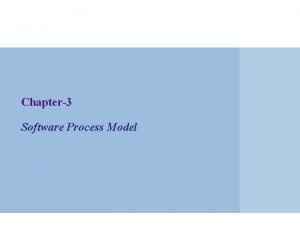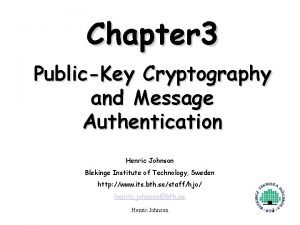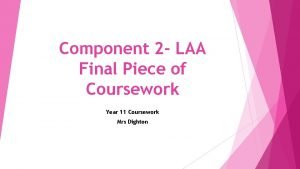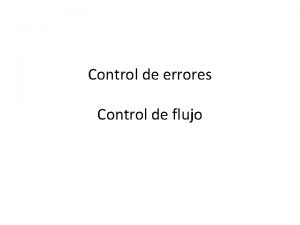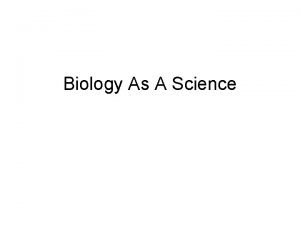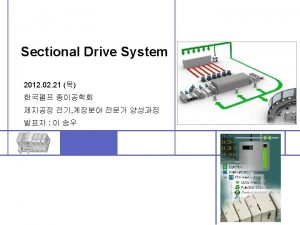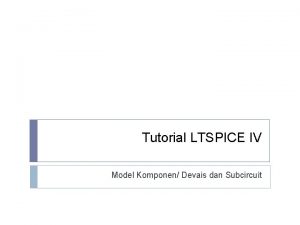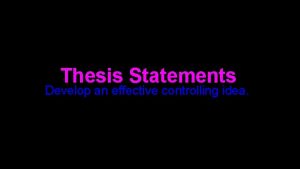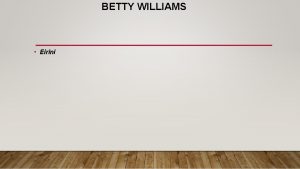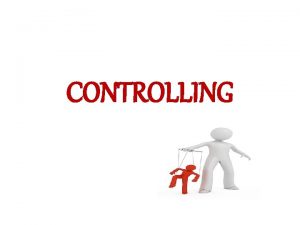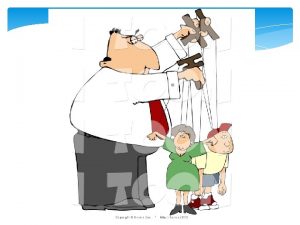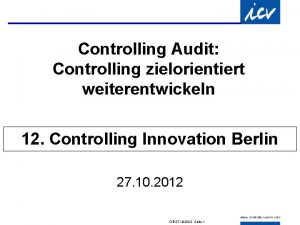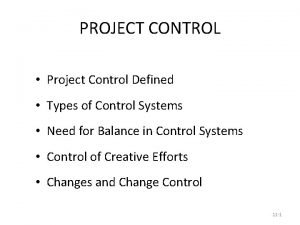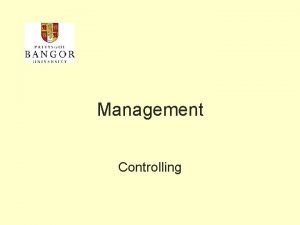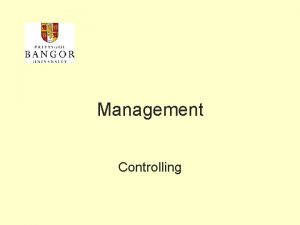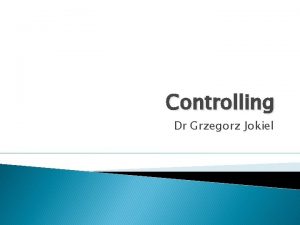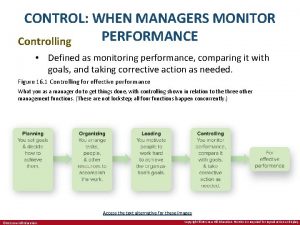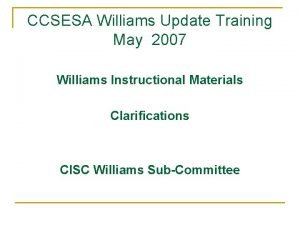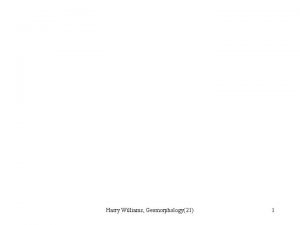Chapter3 6 Controlling Controlling defined Williams 2012 control



















- Slides: 19

Chapter-3. 6 Controlling

Controlling defined Williams (2012) control is a regulatory process of establishing standards to achieve organisational goals, comparing actual performance to the standards, and taking corrective action when necessary.

Cont’d Schermerhorn (2002) defines controlling as the process of measuring performance and taking corrective action to ensure desired results. Dessler (2007) defines control as the task of ensuring that activities are getting desired results

Control system informs management that: q the Activities are proceeding according to plans; so no need for the existing plans to be replaced, hence it should be continued. q. Things are not proceeding according to the plan therefore, there is need for the existing plan to be adjusted.

Cont’d q. The situation has changed the existing plan which is in place must be changed totally or a new plan should be put into use.

Key areas to control • • Physical resources Human Resources Information resources Financial resources

Importance of Controlling q. Ensures that all activities of organisations are in accordance with plans. q. Resources are utilized properly. q. Leads to better results.

• Enables management to cope with changes and uncertainty in the environment. • Controlling facilitates delegation and teamwork.

The Control Process/Steps in controlling 1. Establishment of clear standards of performance 2. Measuring/Comparing performance with established standards, 3. Evaluating deviations/performance 4. Corrective action to repair performance deficiencies

Step 1 -Establishing Standards q. Standards are criteria at which future performance will be measured. Standards should be SMART. Examples of standards are: q profit standards q market share standards q productivity standards q staff development standards

Cont’d Therefore, standards : • Must enable goal achievement • Listen to customer’s comments, complaints, and suggestions. • Benchmarking – determining other companies’ standards

Step 2 - Measuring/Comparing actual performance Performance data can be obtained from: • written reports • oral reports • personal observations. • Statistical reports

Step 3 - Evaluating deviations/ Performance q. Comparing actual performance with standards set. q. Managers apply conceptual skills –when comparing –the actual and standard performance. q. If performance falls short of standards or exceeds -causes must be identified.

Step 4 -Taking Corrective action q. Corrective action is aimed at achieving better results. q. Actual performance match with performance standards-no corrective action-only if standards set were SMART. q. Any deviations corrective action is taken.

Step 1 Establish performance standards Step 4 Take corrective action Step 2: Measure/ Compare actual performance Step 3: Evaluate deviations/performa nce

Control Methods • Feedback control • Concurrent control • Feed forward control • Feedback control is a mechanism for gathering information about performance deficiencies after they occur. This information is then used to correct performance deficiencies or prevent future deficiencies.

Cont’d • Concurrent control addresses the problems inherent in feedback control by gathering information about performance deficiencies as they occur. • Feed forward control is a mechanism for gathering information about performance deficiencies before they occur.

Requirements of effective control system (principles of control). q. Suitability q. Prompt reporting q. Forward looking q. Focus on strategic points q. Flexible.

Cont’d q. Objective—definite – qualitative/quantitative q. Reflection of organization pattern. q. Economical-cost effective q. Understandable q. Suggestive remedial action
 Chapter3
Chapter3 Chapter3
Chapter3 Sam and verna williams
Sam and verna williams Andy williams robert williams
Andy williams robert williams Robbie williams janet williams
Robbie williams janet williams Well defined sets examples
Well defined sets examples Translational research institute on pain in later life
Translational research institute on pain in later life Product inspection vs process control
Product inspection vs process control Reynolds transport theorem
Reynolds transport theorem Stock control e flow control
Stock control e flow control Control volume vs control surface
Control volume vs control surface Difference between positive and negative control
Difference between positive and negative control Negative control
Negative control Hdlc adalah
Hdlc adalah Control de errores
Control de errores Negative control vs positive control examples
Negative control vs positive control examples Flow control and error control
Flow control and error control Scalar control vs vector control
Scalar control vs vector control Control c control v
Control c control v Thesis controlling idea
Thesis controlling idea
